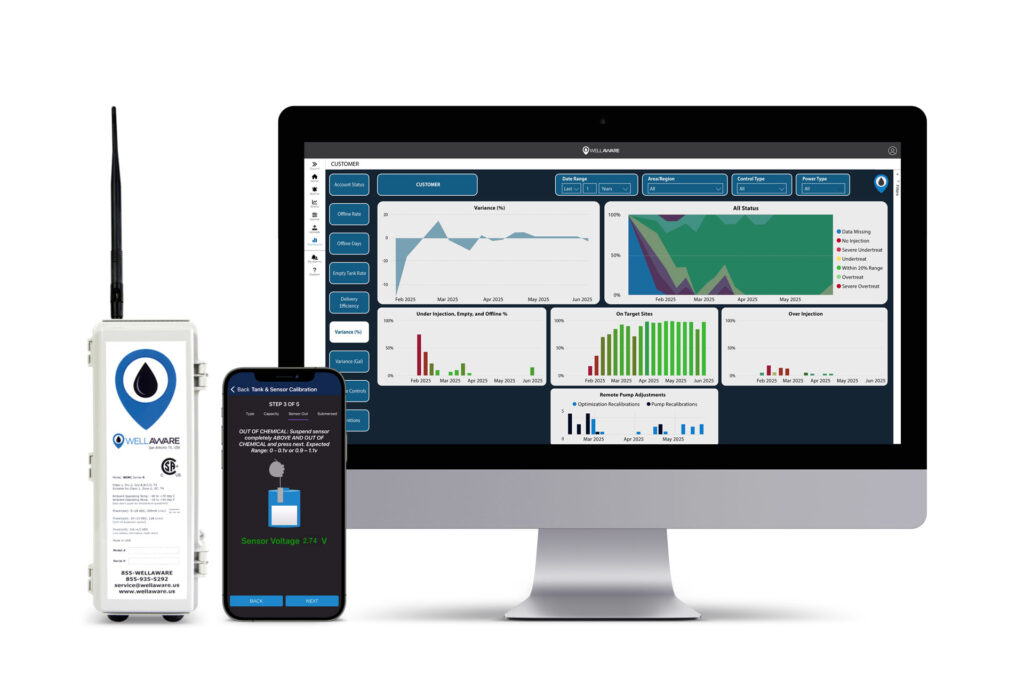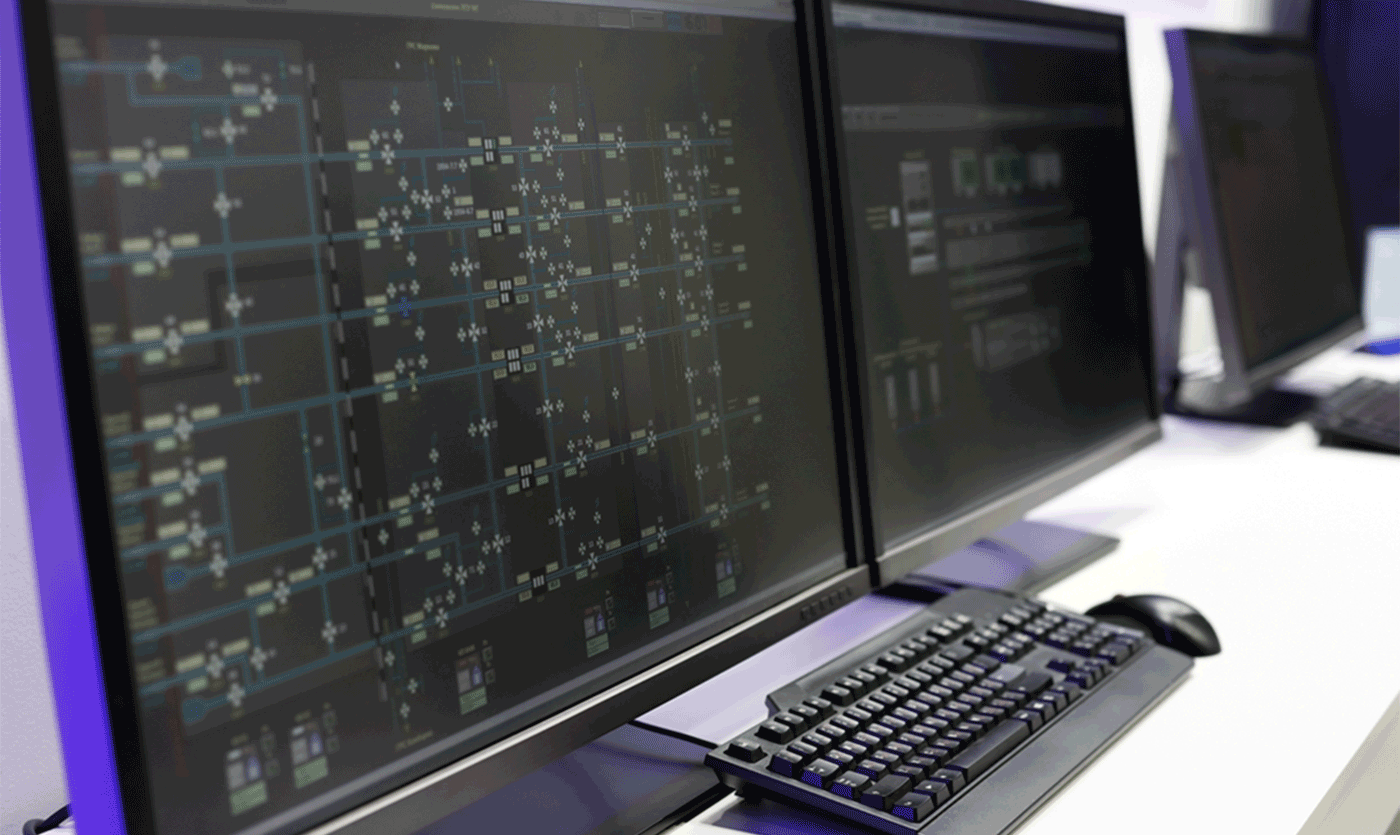Efficiency, safety, uptime, and regulatory compliance are non-negotiable in oil and gas operations. From remote wellheads in the Permian Basin to high-throughput gas processing facilities along the Gulf Coast, operators face a constant challenge: keeping equipment running safely and profitably in increasingly complex and often unmanned environments. At the core of this challenge is SCADA—Supervisory Control and Data Acquisition—the technological backbone that enables real-time oversight and drives operational excellence.
A modern SCADA system does more than collect field data; it transforms raw signals into actionable intelligence. By enabling proactive decision-making, it helps operators minimize downtime, cut costs, and maintain compliance in an industry where every minute of lost production carries steep financial and regulatory consequences. In short, SCADA has evolved from a simple monitoring tool to a central nervous system for industrial operations.
The Central Nervous System of Oil & Gas Operations
SCADA works by continuously monitoring, communicating, and controlling assets across the field. At the foundation are field-level instruments—sensors, meters, and gauges—measuring parameters such as pressure, temperature, flow rates, and tank levels. These serve as the “eyes and ears” of the operation, feeding data into localized controllers.
At remote sites, Remote Terminal Units (RTUs) and Programmable Logic Controllers (PLCs) act as the “brains.” RTUs are built for harsh conditions and remote deployment, capable of gathering data and executing commands even with limited connectivity. PLCs handle high-speed control tasks like pump sequencing or compressor management, providing precise and reliable automation where milliseconds matter.
Data from these devices is transmitted via robust communication networks—often a blend of radio, cellular, satellite, and fiber—to centralized SCADA servers. Here, Human-Machine Interface (HMI) software converts complex data streams into intuitive dashboards, giving operators real-time visibility, historical trend analysis, alarm management, and remote control capabilities. This “single pane of glass” centralizes oversight and enables coordinated responses across sprawling asset bases.

PLCs: The Workhorse of Automation
PLCs are ruggedized industrial computers designed for precise, deterministic control of machinery and processes. Using digital or analog I/O, they directly command actuators, valves, conveyors, and robotic systems. Programmed through languages like Ladder Logic or Structured Text, PLCs are widely used in oil and gas process plants where control needs are centralized and environmental conditions are stable.
Their strengths include low cost, fast response times, and seamless integration with SCADA or HMI systems, making them ideal for high-interaction environments where human oversight is common. Many facilities already rely heavily on PLC infrastructure, making them cost-effective to maintain and expand.
However, PLCs are generally hardwired, limiting their practicality for widely dispersed assets. They are less suited for extreme environments without protective enclosures and often depend on central systems for data storage and broader coordination—making them less autonomous than RTUs.
RTUs: Built for the Edge
RTUs excel in geographically dispersed, harsh, or unmanned operations. Functioning as self-contained edge computers, they combine processing, memory, and storage in a single rugged unit. Their wireless communication capabilities make them ideal for remote pipelines, water facilities, and other field assets where wiring is impractical or cost-prohibitive.
RTUs often operate on event-driven communication, transmitting only critical updates instead of constant data streams. This reduces bandwidth usage while ensuring rapid response to anomalies. Their ability to run on battery or solar power for extended periods further enhances their value in isolated locations.
The trade-off? Facilities already standardized on PLCs make the switching cost to RTUs relatively high. Additionally, data transfer rates are typically slower than those of PLCs, which can pose challenges for time-sensitive controls.
The Power of 3rd Party Integrations
A foundational SCADA system provides essential oversight, but its true potential emerges when combined with specialized third-party sensors, analytics, and control solutions. These integrations create a unified ecosystem capable of predictive maintenance, advanced optimization, and automated compliance.
For example, integrating tank level sensors and flow meters into SCADA allows precise chemical injection control, reducing waste while preventing corrosion and scaling. Vibration and temperature sensors on artificial lift equipment enable predictive pump maintenance, cutting workover costs and downtime. Gas leak detectors integrated with SCADA deliver instant alerts for methane emissions, accelerating containment and helping operators meet tightening environmental standards.
By merging these specialized data streams with production analytics, operators can unlock powerful optimization strategies—adjusting choke settings to boost recovery, forecasting decline curves, and maximizing asset performance in real time.
Data Security and the Value of a Well-Managed SCADA Platform
As SCADA systems become increasingly connected to cloud services, mobile devices, and third-party integrations, the security of operational data is no longer optional—it is mission critical. Cyberattacks targeting industrial control systems have risen sharply in recent years, with bad actors aiming to disrupt operations, compromise safety, or steal proprietary data. A single breach can lead to costly downtime, regulatory penalties, reputational damage, and even environmental incidents.
A properly managed SCADA platform addresses these risks by implementing layered security controls such as:
- Encrypted communications between field devices, servers, and user interfaces to prevent interception and tampering.
- Role-based access control to ensure only authorized personnel can view or modify system parameters.
- Regular security patching and over-the-air updates to close vulnerabilities without disrupting operations.
- Redundant data storage and backup protocols to ensure operational continuity in the event of system failure.
- Continuous monitoring and anomaly detection to identify suspicious activity before it escalates into a major threat.
Beyond safeguarding operations, a secure and well-managed SCADA platform enhances business performance. Operators can confidently integrate new sensors, analytics, and automation tools without fearing exposure to cyber risks. Service providers benefit from improved transparency with their customers, as secure systems can reliably share performance data and compliance reports without risk of data manipulation.
In short, robust SCADA security doesn’t just protect assets—it empowers innovation, accelerates decision-making, and builds trust across the value chain. By partnering with a provider who treats security as a core feature, operators position themselves to adapt quickly to industry demands while keeping their most critical systems safe.
Bridging Legacy Systems and Future Demands
Most oil and gas operations do not start from a blank slate; they inherit decades of legacy infrastructure. This creates challenges when implementing modern monitoring and automation technologies. WellAware’s integration framework is designed to bridge this gap. The platform is protocol-agnostic, capable of unifying data from Modbus, OPC, MQTT, and other communication standards. This allows operators to modernize their operations without costly system overhauls, leveraging existing investments while preparing for future upgrades.
The industry itself is evolving rapidly. Regulatory pressures around methane intensity and greenhouse gas reporting are intensifying. Market dynamics are shifting, with a growing emphasis on uptime, performance, lower costs and operational transparency. A flexible SCADA platform, designed for continuous optimization, enables operators to adapt quickly—adding new sensors, deploying advanced analytics, or integrating mobile field applications without disrupting core operations.
Why WellAware?

WellAware differentiates itself by going beyond basic data collection to deliver proactive insights and enterprise-grade reliability. Its high-resolution RTU data polling—every one to five minutes—provides near-real-time visibility, enabling operators to predict and prevent failures rather than merely reacting to them. Our solid-state and low cost hardware has been engineered for the oilfield which ensures 99.9% uptime, eliminating common mechanical failure points in harsh environments.
Equally important, WellAware focuses on outcomes rather than just technology. The platform is built around total cost of ownership and measurable return on investment, helping operators reduce waste, optimize chemical treatment programs, and improve field crew efficiency. Action-oriented dashboards, including proprietary priority scoring tools, highlight the most critical issues and guide operators on exactly where to focus. Behind the software and devices, a dedicated Client Success Team partners with customers to ensure rapid onboarding, ongoing optimization, and continuous performance improvement.
By bundling hardware, connectivity, analytics, and support into one integrated solution, WellAware provides operators and services companies with a unique solution platform that can integrate into their existing SCADA to drive operational efficiencies, particularly in the field of remote chemical injection.
Learn more at https://wellaware.us/

